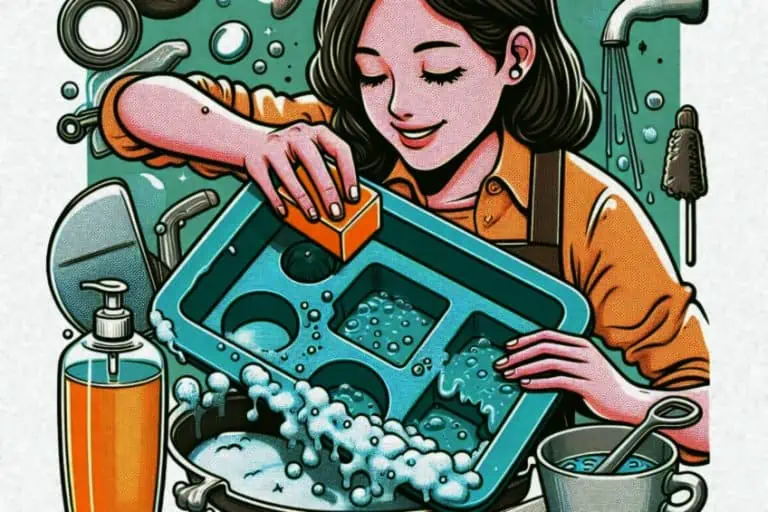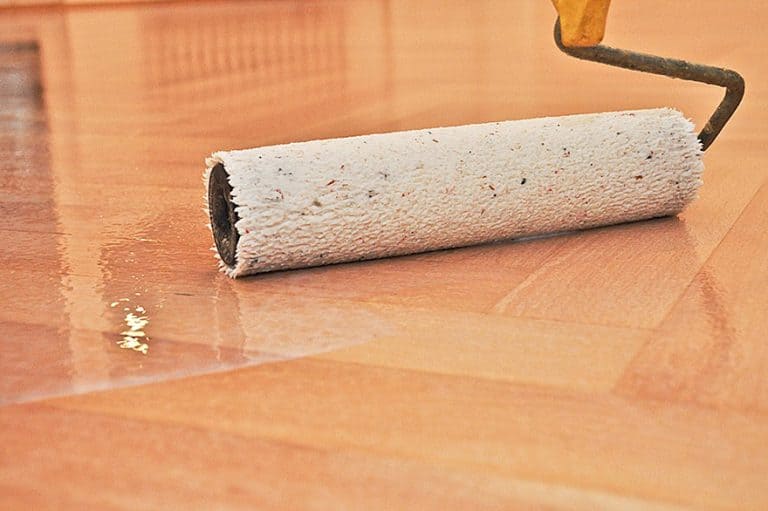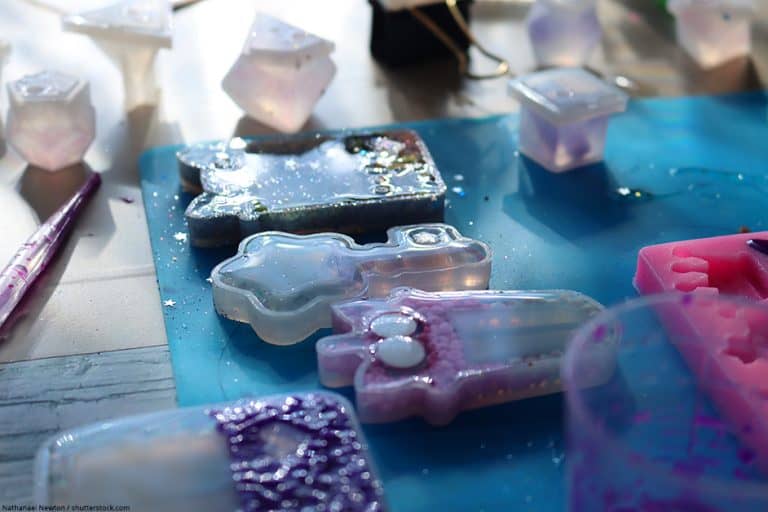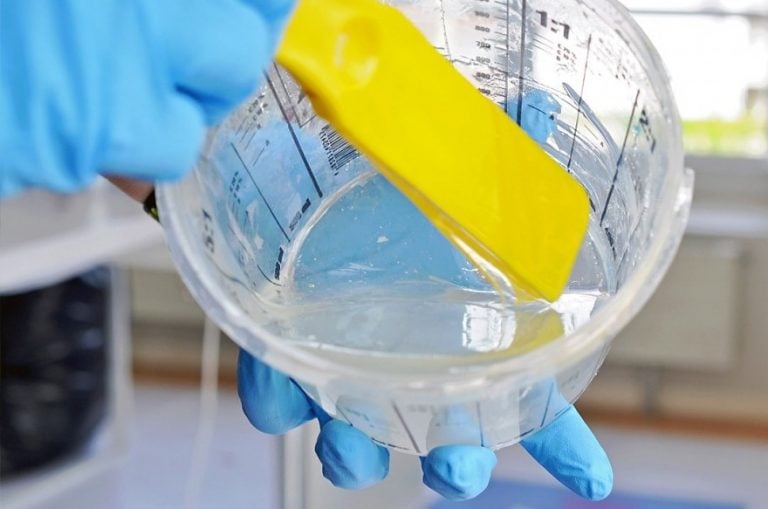How to Remove Epoxy Resin – The Best Epoxy Remover
This post may contain affiliate links. We may earn a small commission from purchases made through them, at no additional cost to you.
Epoxy resin is an extremely versatile material and working with it offers a number of advantages. As long as the resin stays where it should. If the resin gets to places where you don’t want it, it is sometimes very difficult to remove it again. During removal, the advantages of the material, namely the exceptionally good adhesion and the fact that epoxy is extremely hard and stable after curing, quickly turn into quite a few disadvantages. With our tips, however, it will still be no problem for you to remove casting resin that accidentally gets on your skin or other objects.
Table of Contents
Removal of not completely hardened Casting Resin
The removal of not yet completely cured epoxy resin is of course much easier than if the material is already completely dry.
For this purpose, the use of isopropyl alcohol (also known as isopropanol) is the most suitable option. Epoxy can also be removed very well with vinegar or acetone if it has not yet dried through.

Removal of fully cured Epoxy on Surfaces
If the resin is already completely dry, removal is much more difficult. However, there are still some methods you can use to remove the casting resin after it has cured.
Adhesive Remover
If some epoxy has accidentally been applied to a surface, it can be effectively dissolved when dry with a special adhesive remover. However, this method is more suitable for small spillages on wood or plastic.
Universal Thinner
A solution of denatured alcohol and paint thinner, a so-called universal thinner, is also suitable for removing resin residues from surfaces.
Denatured Alcohol / Ethanol
If the epoxy resin is not yet fully cured, it can be removed very easily from the corresponding surface with denatured alcohol. To do this, a cloth is soaked in ethanol and the area to be treated is then briefly wiped clean. If the casting resin is already completely dry, the affected area must first be softened with paint thinner before treatment with ethanol.
Tip: A cheap alternative to the expensive pure alcohol is methylated spirits. The effect is practically the same and the spirit can be used for many other purposes. When using methylated spirits, however, note that it is extremely flammable.
Heat Gun
Fully cured epoxy can be extremely stubborn to remove, but a heat gun is a very useful tool help with this. The dried resin is softened by the hot air and can then be removed mechanically, e.g. with a spatula or paint scraper. Hot air guns with temperature control have proven to be effective in this procedure, as epoxy resins usually soften from around 200 ° C. We recommend that only small sections of the resin to be removed are heated at a time and then removed.
As always when working with epoxy resin, your health should be your first priority. Wear gloves to protect against burns and a respirator to prevent inhalation of the vapors generated by the heat.

Removal of Resin residues on the Skin
Vinegar
Vinegar is a very effective remedy if some epoxy resin has accidentally landed on your skin. This agent even helps when the resin is already cured. Put the vinegar on a cloth and soak the area to be cleaned on your skin with it. Once the resin is softened it can be easily removed.
Acetone
The use of acetone is also a very effective means of removing casting resin from the skin. Like vinegar, acetone has the advantage that you often have it in your house anyway and do not have to specially buy it. To remove the resin, soak a cotton swab with acetone and rub it into the appropriate area. The resin softens in this way and can be easily removed.
Watch your safety here too. The vapors contained in acetone should not be inhaled for an unnecessarily long time. Therefore, you should only use this product in rooms that you can ventilate properly. Since acetone is extremely flammable, make sure that there are no open flames in the vicinity.
Acetone removes a lot of moisture from the skin. Wash your hands thoroughly with soap and water after removing the resin. A moisturizing cream quickly makes up for the loss.
Tip: As nail polish remover consists mainly of acetone (exception: there are some that may note “acetone-free” on the packaging) it is also suitable for removing epoxy resin from the skin if pure acetone is not available.
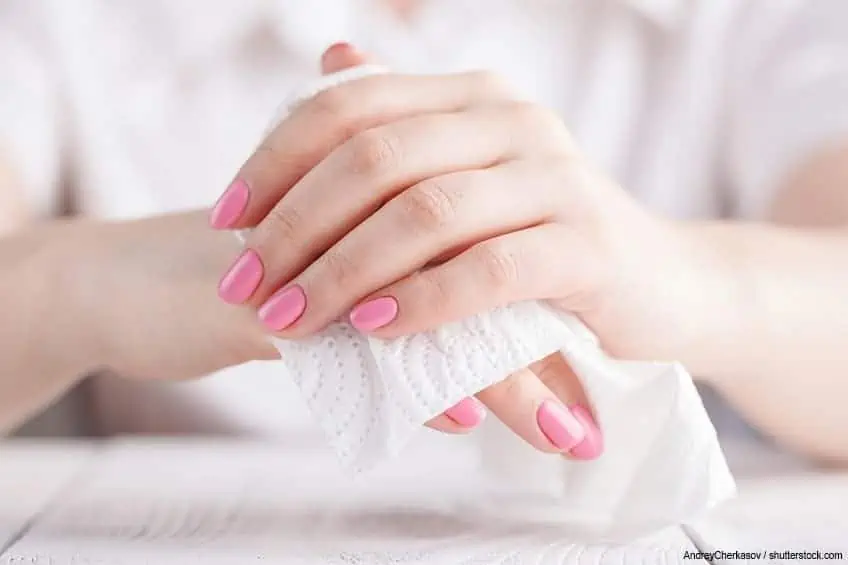
Citrus-based waterless Hand Cleaner
The removal of resin residues with vinegar or acetone is an extreme strain on the skin. A much more skin-friendly alternative is a citrus-based foam cleaner. This is also much less stressful for the respiratory tract. To clean it, simply apply some of the hand cleaner to the affected area, rub it in thoroughly, and then wash the foam off with water. The only disadvantage of this method is that it is much less effective than the other two methods.
In 2005, Charlene completed her wellness degrees in therapeutic aromatherapy and reflexology at the International School of Reflexology and Meridian Therapy. She worked for a company offering corporate wellness programs for several years before opening her own therapy practice. In 2015, she was asked by a digital marketer friend to join her company as a content creator, and it was here that she discovered her enthusiasm for writing. Since entering the world of content creation, she has gained a lot of experience over the years writing about various topics such as beauty, health, wellness, travel, crafting, and much more. Due to various circumstances, she had to give up her therapy practice and now works as a freelance writer. Since she is a very creative person and as a balance to writing likes to be active in various areas of art and crafts, the activity at acrylgiessen.com is perfect for her to contribute their knowledge and experience in various creative topics.
Learn more about Charlene Lewis and about us.



